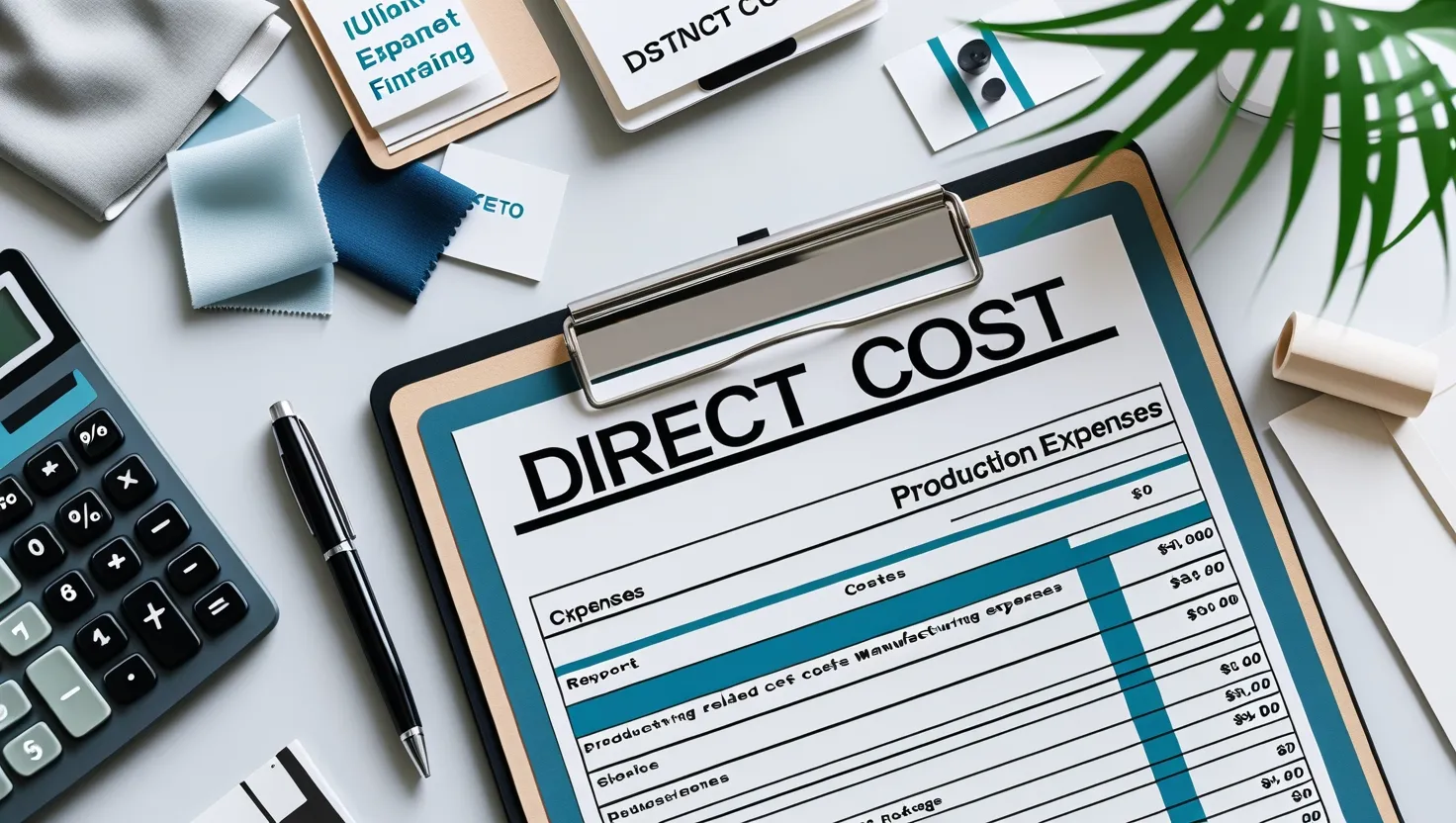 What Are Direct Costs? #
What Are Direct Costs? #
Direct costs refer to the expenses that directly link to making a product or delivering a service. If your business sells chairs, the wood and fabric used to make those chairs are direct costs. If you own a salon, the cost of hair products used on a customer are direct costs.
These are things you can connect to the thing you’re selling or the service you give.
Examples of Direct Costs
- Raw Materials – These are the main items used to make your product. For example, fabric for clothes or flour for a bakery.
- Direct Labor – This is the money you pay people who make the product or perform the service.
- Supplies for Production – These are extra tools or materials you need to get the job done, like nails for a carpenter or paint for a painter.
Direct vs. Indirect Costs
Mixing up direct and indirect costs is easy. Here’s a simple way to tell them apart:
- Direct Costs: These enter into making something specific. Example: fabric to make shirts.
- Indirect Costs: These help the business but not one item. Example: electricity, office rent, or company internet.
Understanding the difference helps you better organize your spending.
Why Direct Costs Matter for Small Businesses #
Every rupee counts when you have a small business. You want to earn more than you spend. That’s why tracking direct costs is so helpful.
When you know your costs, you can:
- Set the right prices.
- Make sure you earn a profit.
- Plan for the future.
- See which products or services make the most money.
Let’s explore how these costs help you reach these goals.
How Direct Costs Help Your Business #
Better Budgeting
When you know these costs, you can make a good plan for your money. We call this budgeting. You can see how much you’re spending to deliver a service or make a product. It also helps you plan, so you don’t run out of money.
More Control Over Spending
Tracking your costs helps you spot where your money is going. If you’re spending too much on one thing, you can try to find cheaper options or use fewer materials. Saving here means you have more money to put back into your business.
Smarter Pricing
You want your prices to cover all your costs and leave room for profit. If you don’t know your direct costs, you might sell your product too cheaply. That means you lose money. Knowing your costs helps you set the right price.
Understanding Profits
Certain products or services generate higher revenue than others. By monitoring your direct expenses, you can identify what yields the greatest profit. This insight allows you to concentrate on what is most effective for your business.
Making Great Decisions
Once you understand your direct costs, you can make smarter choices.
- Should I sell more of this product?
- Should I start a new line of items?
- Should I stop selling something that’s not making money?
You get these answers by looking at the numbers.
How to Find Your Direct Costs #
- Review Purchases: Track all expenses for materials, supplies, and shipping related to your products and services.
- Track Payroll: Identify staff members who directly tie their wages to production or customer service. Record their pay for accurate cost calculation.
- Monitor Supplies: Include tools and materials consumed during production. For instance, paper in printing or glue in crafts.
- Utilize Effective Tools: Use spreadsheets or apps to gather and analyze data, simplifying cost tracking and decision-making.
Common Problems With Direct Costs #
- Hard to Classify Costs: When offering multiple services, it’s tough to separate direct from indirect costs. For instance, a web firm might misclassify internet expenses. If a cost applies to one output, it’s likely direct.
- Fluctuating Prices: Material and labour costs can shift because of supply issues or vendor hikes. Mitigate risks by sourcing smartly, comparing suppliers, and bulk buying when feasible.
- Data Inaccuracies: Inaccurate or missing figures derail cost planning. Ensure data accuracy through consistent reviews and meticulous recordkeeping.
- Misallocated Spending: Overspending on premium inputs when affordable alternatives exist harms margins. Prioritize value and monitor expenditure closely.
Best Ways to Manage Your Direct Costs #
- Review Costs Regularly: Routinely monitor expenses. If something’s overpriced, consider alternatives or negotiate with suppliers.
- Use Efficient Tools: Leverage accounting software to log and analyze costs. It streamlines tracking and minimizes errors.
- Train Staff Well: Educate your team on proper cost reporting. Clear understanding improves accuracy in categorizing direct expenses.
- Benchmark Competitors: Study how peers manage costs. Adopt proven strategies that reduce spending without lowering quality.
- Initiate Cost-Cutting Measures: Implement small shifts—bulk buying, sourcing locally, or using economical materials. These add to meaningful savings over time.
FAQ’s: #
What are examples of direct costs?
Items like fabric, flour, wood, and worker pay are direct costs.
Are wages always direct costs?
Only if they are for workers who make the product or give the service. Office staff pay is not a direct cost.
Do direct costs change?
Yes. Prices may go up or down. Keep checking regularly.
Why should I track direct costs?
Tracking helps you set prices, stay profitable, and plan well.
How do direct costs affect profit?
You make a profit by earning more than your total direct costs.
Conclusion #
Running a business is exciting but also needs careful planning. One of the best ways to stay strong is to know your direct costs. When you track them well, you make better choices, save money, and grow your profits.
Use Vyapar App to handle billing, stock & payments all in one place.
Make bills, track stock, and handle payments in one place.
